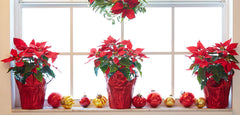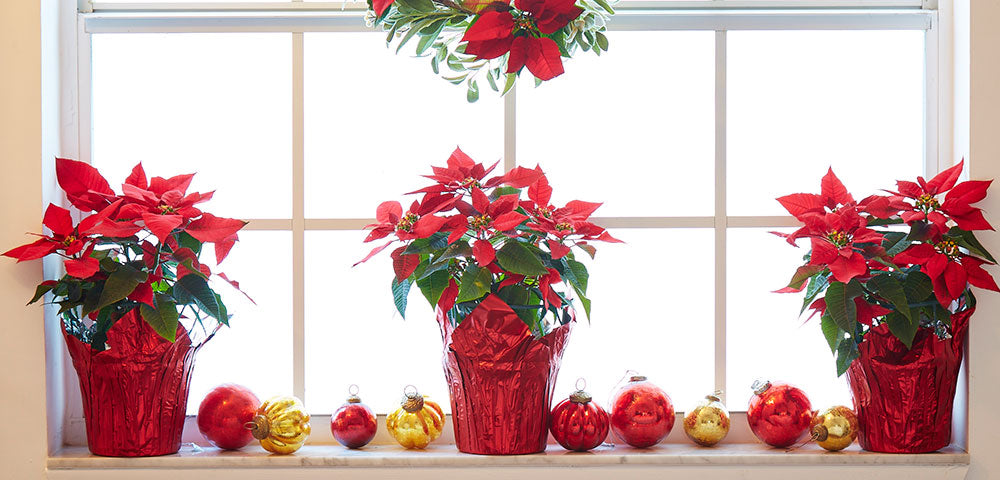Poinsettia (Euphorbia pulcherrima)
Poinsettia Plant Features
First introduced to the United States in 1825, the poinsettia has played a starring role in Christmas celebrations ever since. Once only available in red, poinsettias are now available in white, cream, pink, and bi-colors. Poinsettia is a snap to grow and will look great for months long after the holidays are over. Use large ones to flank a doorway and smaller specimens as hostess gifts or place settings.In frost-free areas, such as South Florida, poinsettias are often used as landscape plants to provide a big shot of festive color during the holiday season.
Poinsettia Questions?
Email us and one of our holiday experts will get back to you.
Poinsettia Growing Instructions
Poinsettias thrive on sunlight. If possible place your poinsettia near a sunny window away from heat ducts or fireplaces. Water whenever the soil feels dry to the touch. After the flowers (technically the bracts form the colorful petals, the yellow centers are the true flowers) fade you can toss the entire plant or keep the plant as a houseplant. Simply prune the plants back to a height of 6 to 8 inches and eventually you will see vigorous new growth. You can move the plants outdoors after frost danger. Feed your plants once a month with a liquid houseplant fertilizer.Outdoors as an annual, poinsettias thrive in sunny spots and moist, but well-drained soil.
Poinsettia are not poisonous, but we do not recommend them for human or animal consumption.
-
Water
Medium water needs
-
Light
Indoors: High light
Outside: Sun
-
Colors
Pink
Red
White
Yellow
-
Special Features
Colorful foliage
Super-easy to grow
Complement your Poinsettia
Boston FernThe bright green fronds of Boston Fern add a lovely textural contrast when paired with Poinsettia.
Ivy
Surround your Poinsettia with small pots of Ivy for an extra dose of holiday cheer.
Christmas Cactus
Another favorite holiday plant, Christmas Cactus makes a good companion for Poinsettia.

